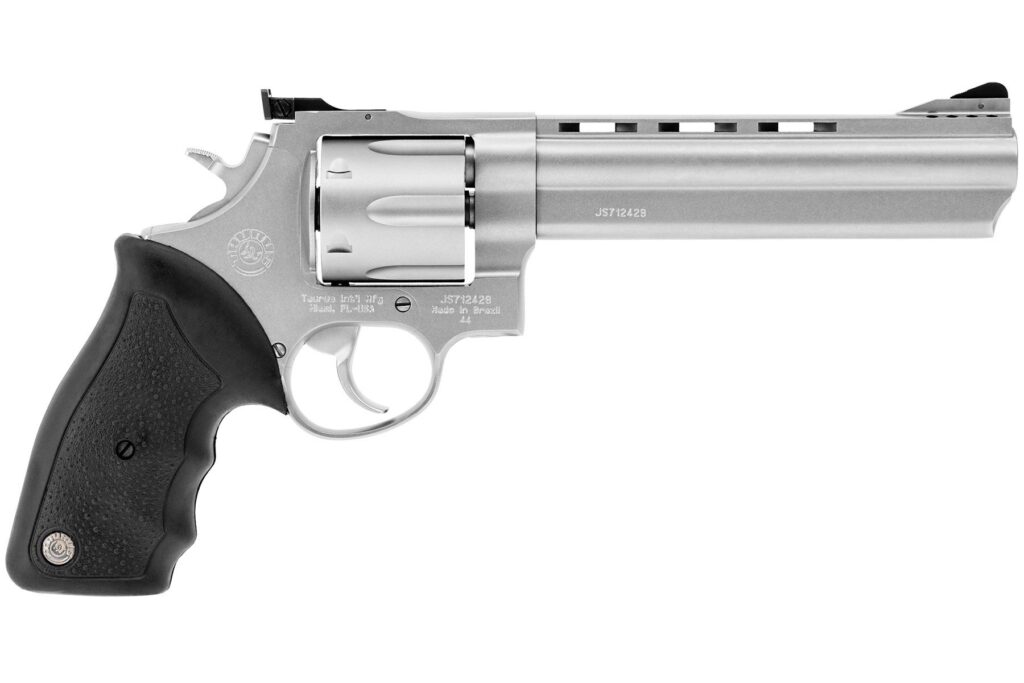Taurus Model 44 .44 Magnum Review: A Heavy-Hitting Classic
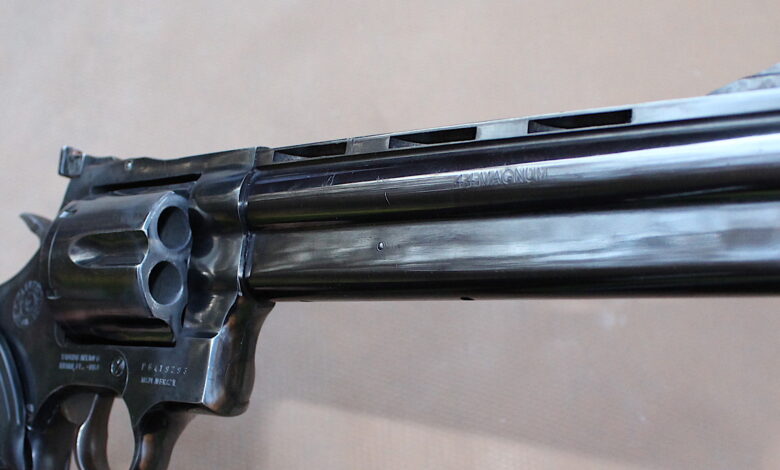
The world of revolvers has taken some twists and turns over the years.
From their earliest days to today’s elephant-slayers, you can bet there will be something interesting to look at. My friend Ed picked up such a beast a few years back and graciously loaned it to me for this little write-up.
It is an older Model 44 Taurus .44 Magnum with a ported 6.5-inch barrel.
Let’s get the 800-pound gorilla out of the room right up front… why does it look like a Smith and Wesson? There’s a good reason for that.
Taurus had been making revolvers since 1941 and had gotten good at it. In 1970, S&W’s parent company (Bangor Punta) purchased a controlling interest in Taurus and entered into a relationship to share technology, designs, etc. It was this way until 1977, when Taurus was sold to its current owners. That speaks to the fact that S&W considered Taurus a quality manufacturer; otherwise, they wouldn’t have partnered with them.
So the relationship ended in 1977, and original Taurus designs became the order of the day.
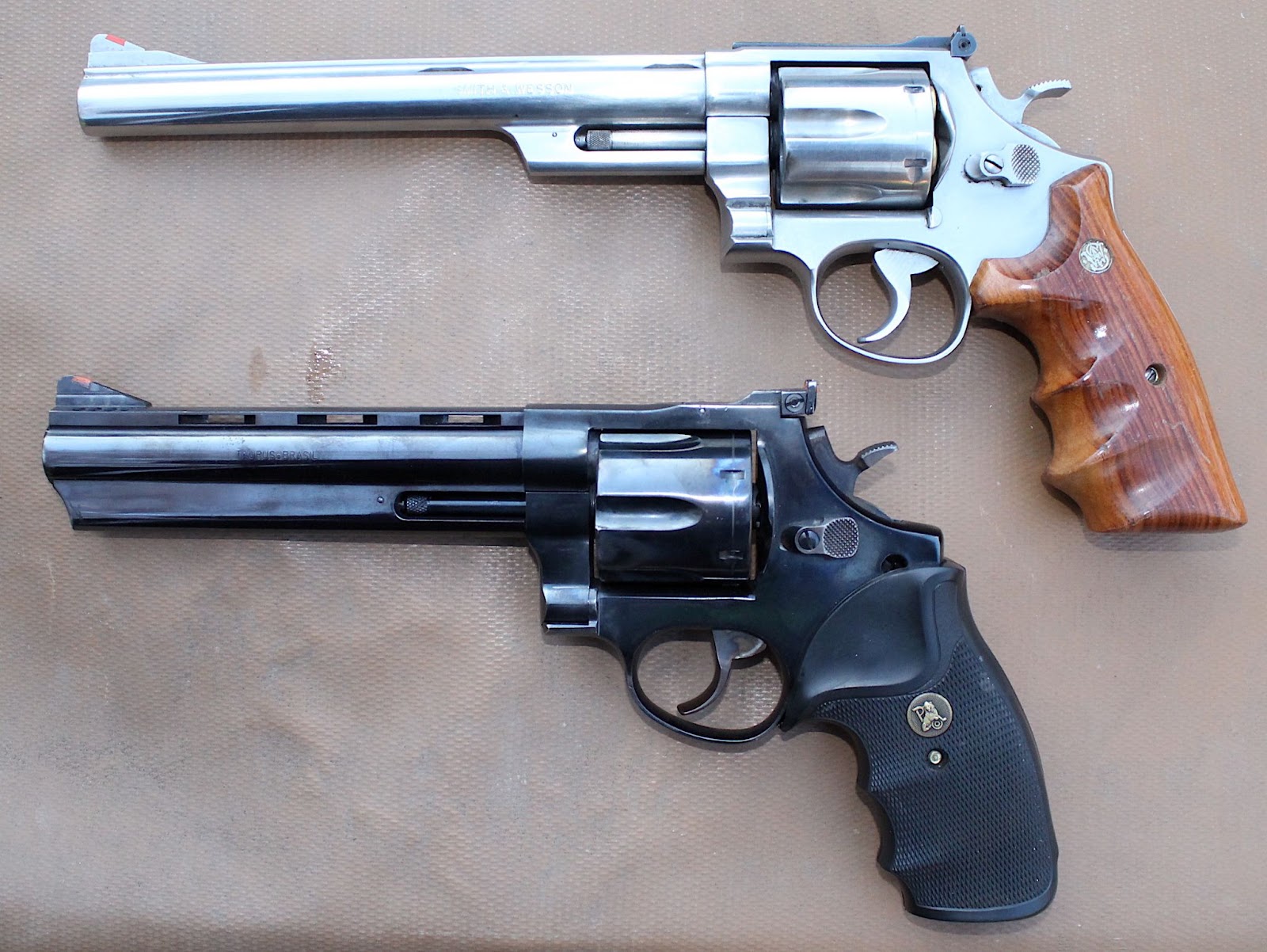
I tried to get a manufacturing date for this revolver, but with Taurus, that’s hard. Given what we just learned above, we can safely assume it was made between 1970 and 1977 since it looks an awful lot like a S&W Model 29 with an added full barrel underlug and a vent rib barrel.
Granted, the new Taurus revolvers still resemble those of S&W, but the newer designs depart from that in a few ways. S&W could have made the one we have here.
Here is a photo of my 8 ⅜” Model 629 that was made in 1982 for comparison.

The guns are very close, except for the obvious underlug and rib differences. Even the cylinder latches are the same, unlike new Taurus revolvers. I wish mine had that underlug – it helps with recoil. But… mine was a gift from a dear friend before he passed and I do believe my boys would throttle me if I ever sold it, so I won’t. Anyway, that’s why they look alike. It’s on purpose and it’s legal.
The Model 44
The Taurus 44 is currently made only in stainless steel and three barrel lengths: 4”, 6.5”, and 8.37”. I pulled up the 6.5” version’s web page to see how the new one compares with the old.
They look pretty much alike, except for the grips (the ones on the old gun are Pachmyer grips, most likely added later), the cylinder release shape, and the sights. Interesting thing about the cylinder release… it is an exact copy of what’s on my S&W. They have changed it since.
There is one difference that’s hard to spot from a side shot… the barrel is vented. Each side of the muzzle has four holes to vent gases and to hold the muzzle down in recoil. Again, this is something that I wish mine had. They do help tame the .44’s bark and bite.
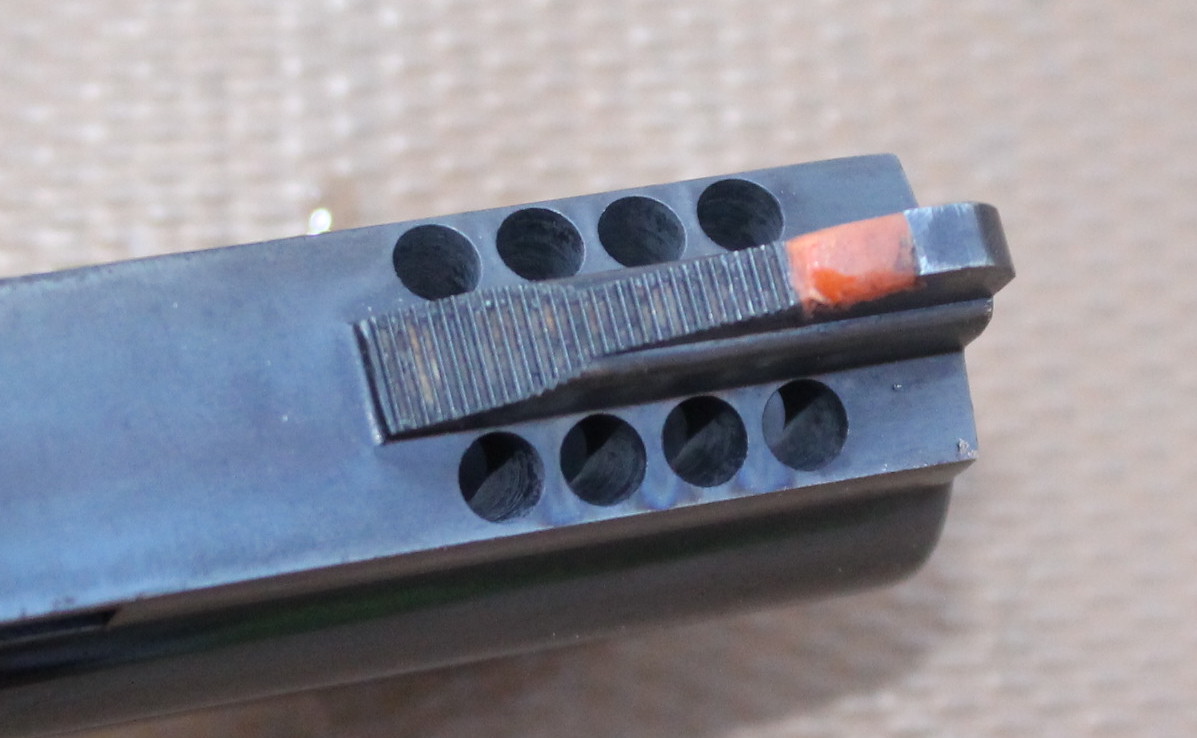
This gun is solid. I weighed it on my digital scale and it went 52 oz. That’s a handful! It outweighed my old S&W by 7.6 ounces… right at half a pound. That’s that underlug for ya.
One anomaly I noticed on this gun is its sights. I’m not sure it came from the factory like it sits now.
Someone has either bought a third-party rear sight or installed red “dots” of something resembling fiber optic material on each side of the rear sight’s notch, in the blade, and the front sight has a red plastic insert cut into it, which looks to be DIY. It sure makes it interesting!
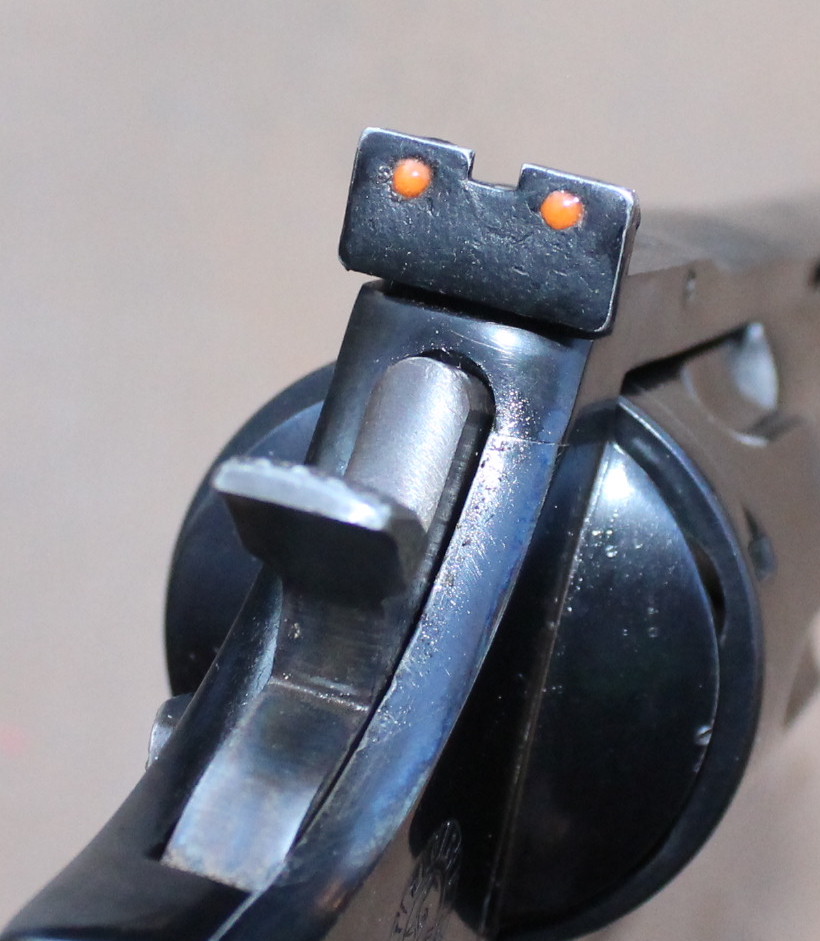
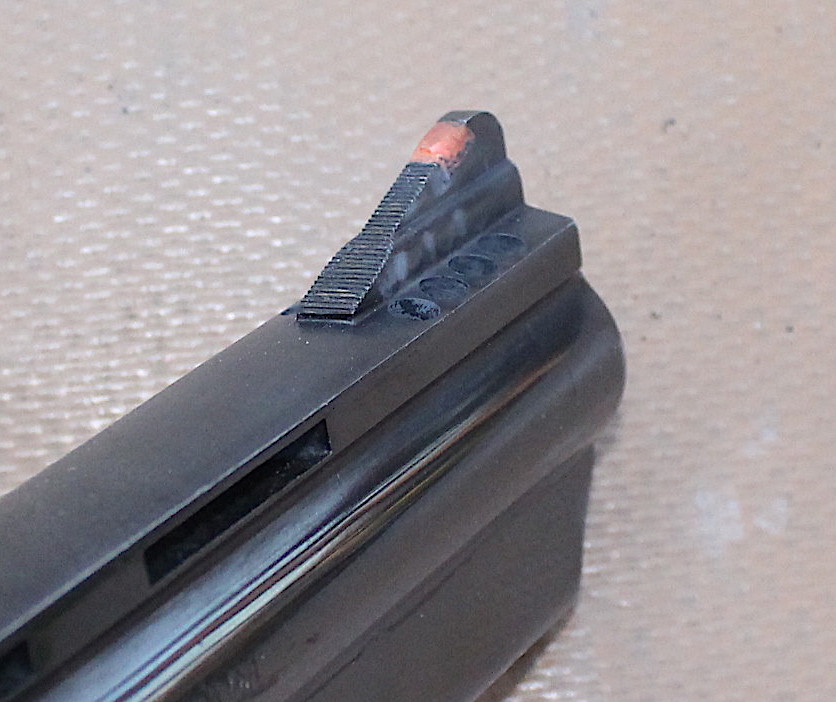
Why Would You Want One Of These?
Well, for one reason, deer. That long-barreled 629 you see above has accounted for more deer than I can remember, since the late 1980s.
The thing about deer and heavy revolvers like what we have here is that it doesn’t take a nuclear load to put them down. My go-to load for deer hunting out to 100 yards or so has always been a home-cast 240-grain SWC, pushed to around 1100 f.p.s.
That doesn’t bend anything, is pleasant to shoot, and still goes all the way through a sideways doe at 75 yards. I’ve used different powders over the years, but have settled on Long Shot by Hodgdon. 10 grains of that will accomplish what I need – plus more.
Out of my S&W 1854 lever rifle, I get 1400 f.p.s. Plus, they shoot into one hole. Winner, winner!
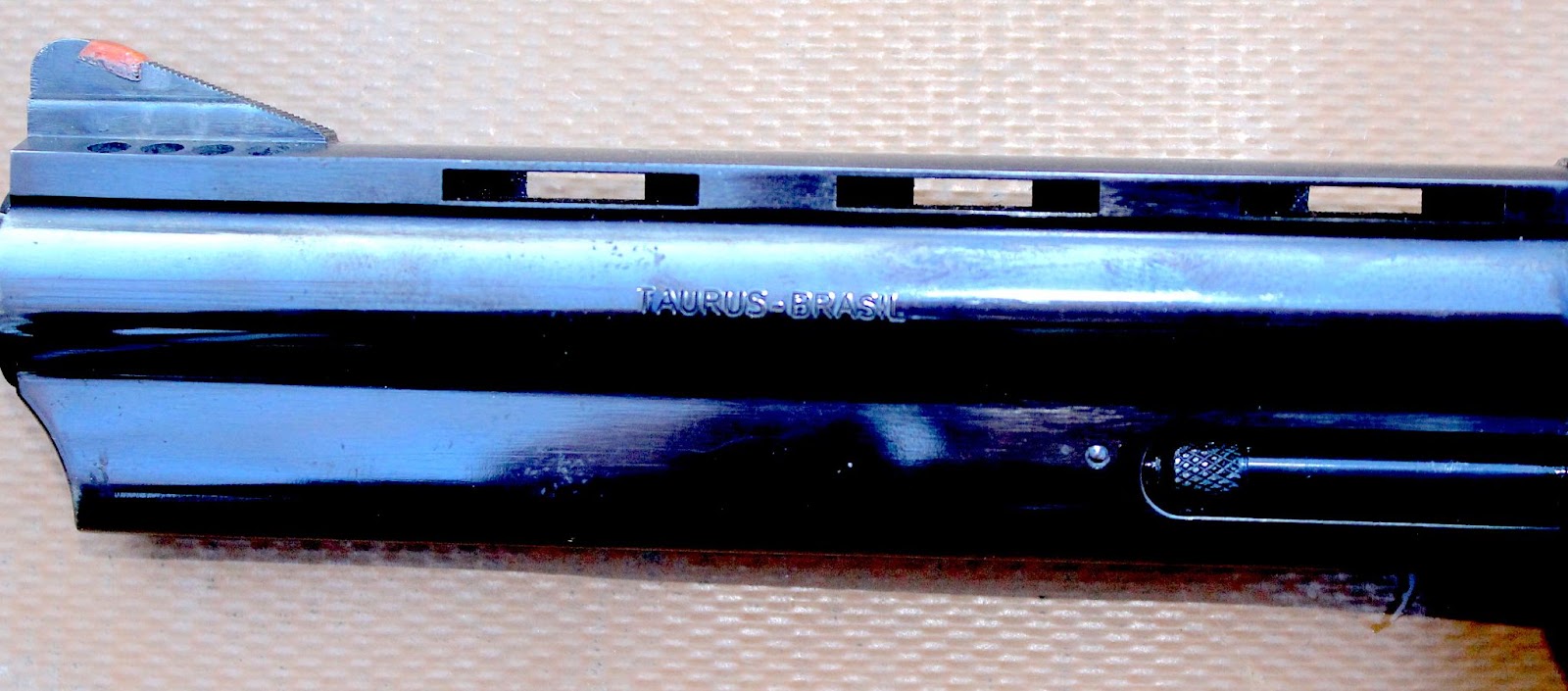
I digress. Another reason why you might want one of these is why friend Ed bought it used to begin with… protection in bear country.
He’s had it for years, and said he picked it up for a week’s wandering in the wilds of Montana. He didn’t have to use it, he said, but it was comforting knowing it was there. The 6.5” barrel is a good compromise.
Although it’s easier to carry, four inches sometimes doesn’t produce the velocities that the .44 is known for. The long barrel on the 629 (my artillery) is too long to carry easily, especially in a hip holster. Been there, done that, many times. You feel like you’re pulling the gun out hand-over-hand to get it past the holster.
Shorter barrels are better for the purpose mentioned here. A chest or shoulder holster is the best way to tote a long-barreled wheelgun in the hunting woods.
Range Time
I wanted to shoot the Taurus and my S&W side by side and compare them, so I did. I used my favorite handload (mentioned above) since this is not a new gun review, and it really doesn’t matter what I shoot. This load has proven accurate, so I thought I’d try it. I also wanted to take my Garmin Xero C1 Pro chronograph out and check the velocities.
I set up a target or two up at 25 yards and let fly. Here’s a sample. Always has to have that Frequent Flyer!
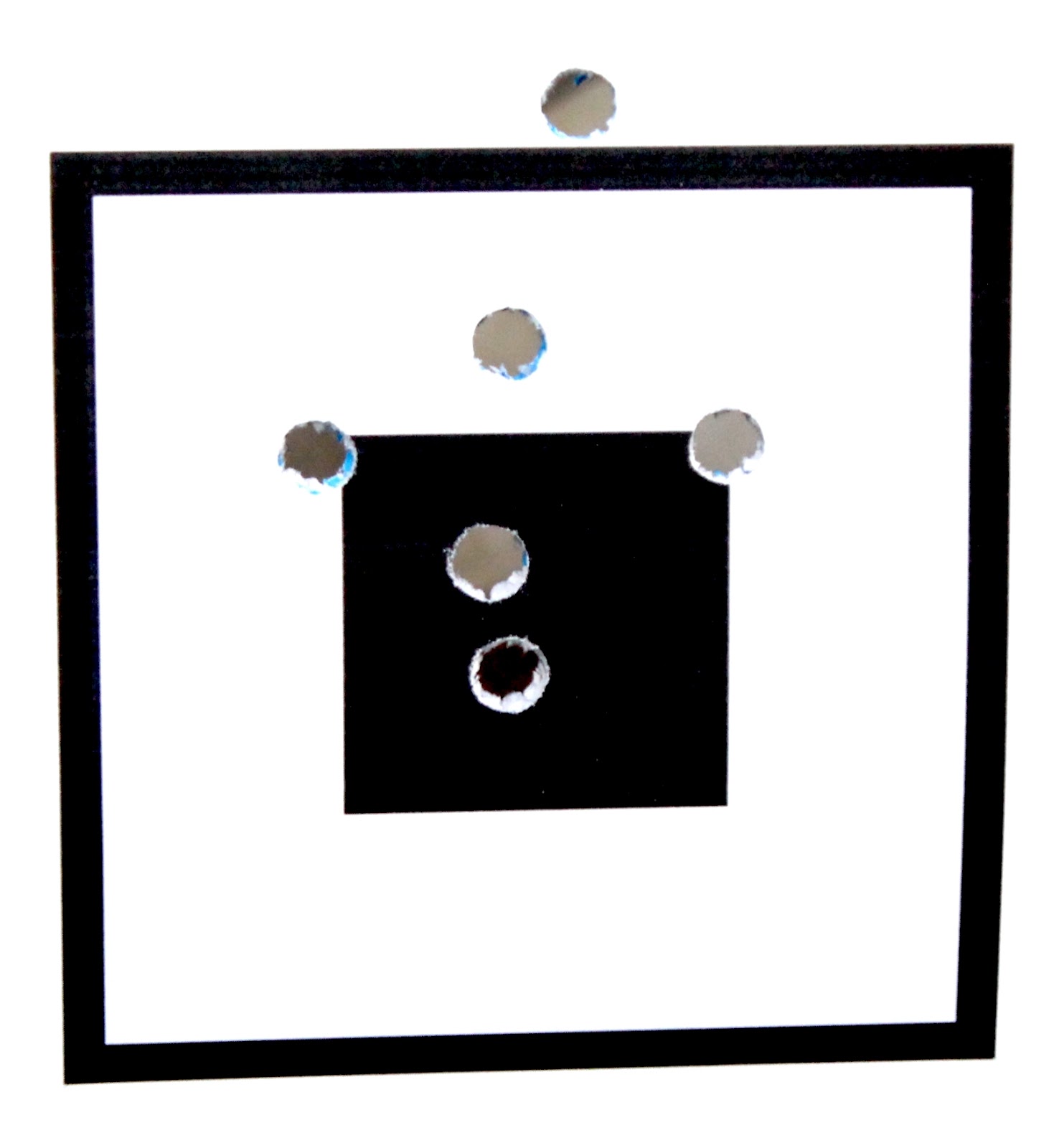
My handload was pretty anemic out of the shorter barrels. Out of the Taurus, it averaged 991 f.p.s. with 525 ft./lbs. of energy. Most of the shots were centered, if a bit high, but that’s to be expected. I could see building off this load if this revolver were mine to hunt with. The 629 didn’t do a lot better… 1023 f.p.s., 556 ft./lbs. of energy. At least the accuracy was decent with both of them.
Final Thoughts
I have always liked revolvers, especially those of the .44 variety (Special or Magnum).
So it was with great interest that I relieved Ed of this gun for a few days and played with it. I was not disappointed. The gun is accurate, solid, and the vents help with recoil.
If you run across something like this on the used market, you might want to consider picking it up as it can be a most useful tool. From hunting to rough-country protection to home defense, you could not be better armed.
A .44-caliber, 240- or 250-grain hard cast SWC at magnum velocity has been known to settle a predator’s hash in quick fashion. I know I sure like my S&W, and would love to have a “matching” Taurus!
Where To Buy
